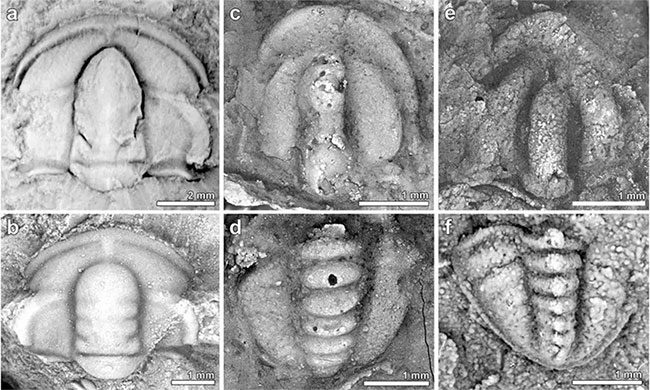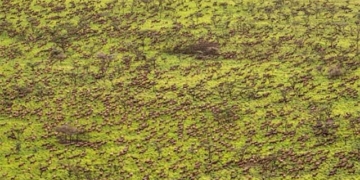Geological and fossil evidence over half a million years old has shown that the Earth itself may be responsible for mass extinction events.
A research team led by sedimentologist Paul Myrow from the University of Colorado (USA) has demonstrated that the tectonic processes of the Earth can both nurture life and also lead to its destruction.

Cambrian fossils excavated in the Transantarctic Mountains reveal that the Earth was the “Cambrian killer” – (Photo: SCIENCE ADVANCE).
According to Live Science, the authors focused on the Sinsk Event, a mass extinction event that occurred during the Cambrian period (540-485 million years ago).
This geological period witnessed an explosion of life on Earth, giving rise to a multitude of strange and complex organisms during the most significant evolutionary leap of animal life on the planet.
Amid this, the Sinsk Event occurred abruptly, killing many large marine animal groups including conical shelled Hyoliths and Archaeocyathid sponges, which were once part of global coral reef ecosystems.
Now, scientists have identified the Gondwana tectonics, formed around 600-540 million years ago, as the culprit.
Gondwana was the name of the supercontinent that dominated the Southern Hemisphere during that time, alongside another supercontinent named Laurasia in the North.
According to a publication in the journal Science Advances, clues to these events were found in rock layers in the Transantarctic Mountains on the Antarctic continent and on Kangaroo Island in Australia.
This is where they collected numerous fossils of organisms that originated and went extinct during the Cambrian.
Among these, the fossils of trilobites are considered key. They evolved rapidly, so their shapes can indicate when they died, allowing researchers to estimate their age as well as the age of the rocks encasing them.
These fossils date back approximately 514-512 million years, during the mid-Cambrian, coinciding with the Sinsk Event.
At that time, both Oceania and Antarctica were part of the supercontinent Gondwana.
Tectonic activity related to this land caused massive mountain-building events, while simultaneously causing the seabed of shallow oceans to sink.
The ocean suddenly became deeper, pulling coral reefs down and causing organisms accustomed to shallow waters to be unable to adapt in time. Additionally, erosion from new mountain ranges deposited gravel and pebbles into the coral reefs. As a result, coral reef ecosystems “drowned.”
Mountain-building activities also caused the Earth’s crust to stretch in other areas, allowing magma to rise and form vast basalt regions, alongside releasing large amounts of greenhouse gases that warmed the atmosphere.
This warming, similar to today’s climate change, slowed ocean circulation, causing oxygen-rich waters to sink while surface waters became depleted of oxygen, leading to the death of a multitude of organisms.
Tectonic plate theory is a scientific theory explaining the movement of tectonic plates – essentially the Earth’s crust fragments. These plates are in continuous motion, interacting with each other and causing geological phenomena such as earthquakes, volcanoes, and the formation of continents…
Tectonic activity also contributes to the chemical balance of the Earth, helping to stabilize the planet’s climate and atmosphere so that life can continue to exist and potentially plays a significant role in the reactions that generate primordial life.


















































